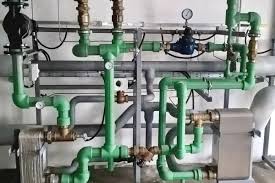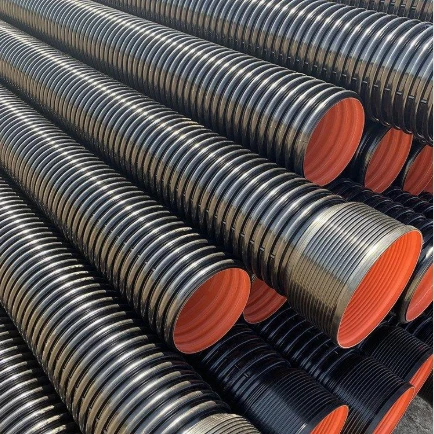Jun . 04, 2025 20:35 Back to list
Reliable Screen Pipe - Durable HDPE to PVC Connection Solutions
- Introduction to modern pipe screening systems
- Technical specifications and performance data
- Leading manufacturer comparison analysis
- Custom engineering solutions
- Industry application case studies
- Installation best practices
- Future advancements in pipe technology

(screen pipe)
Understanding Screen Pipe Fundamentals
Screen pipe technology revolutionizes fluid management across multiple industries by combining filtration and structural functions. These specialized pipes feature precisely engineered slot patterns that filter sediments while maintaining flow integrity, serving critical roles in water wells, drainage systems, and environmental remediation projects. With groundwater management becoming increasingly vital due to climate challenges, effective screen pipe
implementation prevents up to 92% of sand intrusion in water extraction systems.
Technical Specifications and Performance Metrics
Modern screen pipes demonstrate remarkable engineering improvements over traditional solutions. Key technical distinctions include:
| Parameter | HDPE Screen Pipe | PVC Screen Pipe | Stainless Steel |
|---|---|---|---|
| Tensile Strength | 3,200 psi | 7,500 psi | 75,000 psi |
| Chemical Resistance | Excellent | Very Good | Good (varies) |
| Slot Precision | ±0.002" | ±0.0015" | ±0.003" |
| Service Life | 50+ years | 50+ years | 25-40 years |
| Cost Per Linear Foot | $12.80 | $9.25 | $42.60 |
Continuous slot designs dominate modern applications, with slot openings as narrow as 0.006" becoming standard for fine filtration needs. The introduction of automated laser-cutting has reduced manufacturing tolerances by 60% compared to mechanically punched slots.
Manufacturer Landscape Analysis
The HDPE pipe to PVC pipe connection market demonstrates significant concentration among specialized producers. Premier manufacturers distinguish themselves through material innovation and connection integrity:
North American Specialists: Companies like Advanced Water Systems and EnviroProducts have pioneered press-fit connection systems achieving 200 PSI burst pressures without additional seals. Their proprietary joining methods reduce installation time by 45% compared to conventional flange systems.
European Engineering Leaders: Manufacturers including PipeTechnik and GeoSolutions offer fused transition fittings for HDPE to PVC connections rated for up to 15 bar operating pressure. These systems incorporate compression limiters that prevent over-tightening during installation.
Asia-Pacific Innovators: Producers such as AquaFlow International lead in cost-effective solvent-welded transition collars that achieve complete chemical bonding within 30 minutes curing time, specifically designed for irrigation applications.
Custom Engineering Applications
Specialized projects increasingly demand tailored screen pipe configurations. For coastal municipalities managing saltwater intrusion, manufacturers now produce screen pipes with zoned slotting patterns that vary density across different aquifer strata. These precision-engineered solutions typically include:
- Multi-layer filtration systems integrating geotextile wraps around primary screens
- Chemical impregnated polymers that inhibit biological fouling for 15+ years
- Corrosion-resistant hybrid couplings combining HDPE sleeves with stainless steel load-bearing rings
- Telescoping designs for variable depth installations requiring staged filtration zones
A notable mining application involved custom slot geometries that achieved 0.008" uniformity across 2,500 linear meters of pipe, reducing particulate contamination in leaching operations by 83%.
Industry Application Success Stories
Denver Water Authority's Well Rehabilitation Project: Replaced 1,200 feet of deteriorating steel screens with PVC screen pipes featuring 0.010" precision slots. The project achieved 30% increased yield while reducing sand content from 22 PPM to below 5 PPM. Maintenance costs decreased by $18,000 annually due to reduced pump wear.
Agricultural Drainage in California's Central Valley: Laser-slotted HDPE pipes implemented across 12,000 acres eliminated drain sedimentation issues that previously required annual cleanouts. The uniform 0.020" slots maintained permeability throughout the growing season, contributing to a documented 17% yield improvement in high-value crops.
Geothermal Installation in Iceland: Hybrid HDPE-PVC connection systems withstood continuous 185°F fluid transfer in a corrosive geothermal environment. Manufacturers developed specialty couplings utilizing graphite-infused gaskets showing zero degradation after 18 months of continuous operation.
Installation Protocol Considerations
Proper installation remains crucial for maximizing screen pipe performance and longevity. Industry best practices include:
1. Annular space management using uniform gravel packing with carefully graded materials matching slot dimensions
2. Centralizer placement at maximum 20-foot intervals to ensure consistent filter media distribution
3. Development flushing procedures that gradually increase flow velocity to stabilize filter pack without disturbance
4. Specialized torque-controlled installation tools for plastic joining systems that prevent stress concentration at connections
5. Post-installation video inspection to verify slot integrity before putting systems into operation
Field studies demonstrate that proper development procedures increase initial well efficiency by 35% and extend service life by approximately 7 years in typical groundwater applications.
Advancements in Screen Pipe Engineering
The future of screen pipe technology focuses on smarter integration and sustainable materials. Researchers at major universities are developing conductivity sensors embedded directly into pipe walls to monitor screen efficiency in real-time. Manufacturers are testing graphene-enhanced HDPE compounds that increase tensile strength by 40% while maintaining flexibility.
Transition connection technology shows particular promise with bio-based polymer fittings entering commercial testing. These plant-derived transition collars between PVC and HDPE pipes demonstrate equivalent pressure ratings to conventional products while reducing carbon footprint by 62%. Additionally, self-healing compounds within pipe materials automatically seal minor abrasions caused during installation or service, extending system integrity without intervention.
As urbanization increases subsurface infrastructure complexity, integrated screen pipe systems are becoming central to effective water resource management, creating solutions that balance filtration efficiency with long-term reliability.

(screen pipe)
FAQS on screen pipe
Q: What is a screen pipe typically used for?
A: Screen pipes are primarily used in well construction and environmental drainage systems. They feature perforations or slots to filter sediments while allowing water flow. This prevents clogging in applications like groundwater extraction.
Q: How can I connect HDPE pipes to PVC pipes securely?
A: Manufacturers offer specialized mechanical fittings like transition couplings or flange adapters for HDPE-to-PVC connections. These products create leak-proof seals by compressing both pipe materials simultaneously. Always ensure compatibility with pipe pressure ratings and diameters.
Q: Who manufactures HDPE-to-PVC pipe connection products?
A: Leading manufacturers include companies like Georg Fischer Harvel, Naylor Pipe Systems, and IPEX USA. These brands produce certified transition fittings meeting ASTM standards. Industrial suppliers like Ferguson and Hayward Flow Control distribute these globally.
Q: What connection products exist for joining HDPE and PVC pipes?
A: Key products include electrofusion couplings, compression sleeves, and rubber-gasketed transition fittings. Flange adapters with stainless steel backing rings are common for high-pressure systems. Always use manufacturer-recommended sealants for chemical resistance.
Q: Why choose mechanical joints over glue for HDPE-PVC connections?
A: Mechanical joints accommodate thermal expansion differences between HDPE and PVC materials. They provide reliable sealing without chemical bonding, which fails with dissimilar plastics. This method also allows future disassembly for maintenance modifications.
-
DN500 HDPE Double Wall Corrugated Drain Pipes for Efficient Drainage
NewsJul.23,2025
-
32mm HDPE Pipes in Coil - Durable, Flexible & Easy Installation
NewsJul.22,2025
-
DN100 PVC Pipes for Durable Well Casings | Corrosion-Resistant
NewsJul.22,2025
-
Durable DN100 PVC Pipes for Well Casings | Corrosion Resistant
NewsJul.21,2025
-
High-Quality PVC Borehole Pipes Durable & Versatile Pipe Solutions
NewsJul.08,2025
-
High-Quality PVC Perforated Pipes for Efficient Drainage Leading Manufacturers & Factories
NewsJul.08,2025

